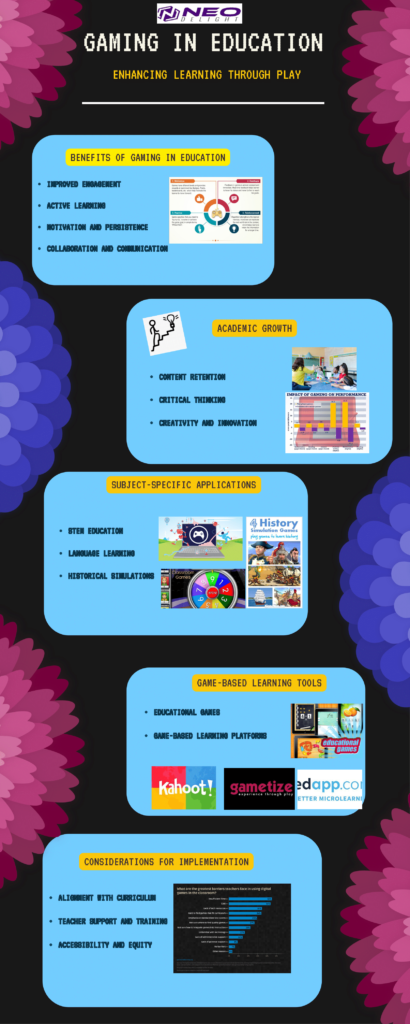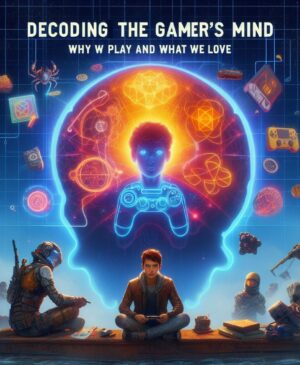Introduction
Gaming can enhance learning through play. Gaming has long been seen as a form of entertainment, but it is also increasingly being recognized as a powerful tool for learning. In fact, there is a growing body of research that suggests that gaming can be a highly effective way to enhance learning.
This blog post will explore the benefits of gaming in education, as well as some of the challenges and risks associated with this approach. We will also provide some tips for incorporating gaming into your own teaching practice.
What is gaming in education?
Gaming in education refers to the use of video games, computer games, and other interactive games to teach and learn. This can involve using games to teach specific content, such as math or science, or it can involve using games to develop broader skills, such as problem-solving, critical thinking, and collaboration.

What are the benefits of gaming in education?
There are many potential benefits of gaming in education, including:
- Engagement: Games are often highly engaging, which can help to keep students motivated and interested in learning.
- Motivation: Games can also be motivating, which can help students to persevere through difficult challenges.
- Active learning: Games often involve active learning, which can help students to better understand and retain information.
- Problem-solving: Games can help students to develop problem-solving skills, which are essential for success in today’s world.
- Critical thinking: Games can also help students to develop critical thinking skills, which are essential for making informed decisions.
- Collaboration: Games can also help students to develop collaboration skills, which are essential for working effectively in teams.
What are the challenges and risks of gaming in education?
While there are many potential benefits of gaming in education, there are also some challenges and risks associated with this approach. These include:
- Addiction: Gaming can be addictive, which can lead to students spending too much time playing games and not enough time learning.
- Content: Not all games are created equal. Some games contain inappropriate content that is not suitable for educational purposes.
- Cost: Some games can be expensive, which can make it difficult for schools to afford them.
- Skill level: Some games require a certain level of skill, which can make them inaccessible to some students.
How to incorporate gaming into your teaching practice
If you are interested in incorporating gaming into your teaching practice, there are a few things you can do:
- Start small: Don’t try to incorporate too much gaming into your teaching at once. Start with a few games that you think would be appropriate for your students and see how they go.
- Choose the right games: Not all games are created equal. When choosing games for your classroom, make sure to choose games that are educationally sound and that are appropriate for your students’ age and skill level.
- Integrate games with other activities: Don’t just use games as a stand-alone activity. Integrate games with other activities, such as reading, writing, and discussion.
- Be prepared to adapt: As you use games in your classroom, be prepared to adapt your teaching methods. You may need to adjust the difficulty of the games or the way you present the content.
Conclusion
Gaming can be a powerful tool for learning, but it is important to use it wisely. By being aware of the potential benefits, challenges, and risks of gaming in education, you can use this approach to enhance learning in your classroom.











No Sign-up. Play Directly.